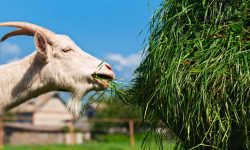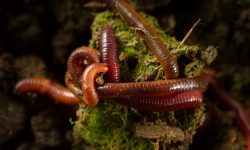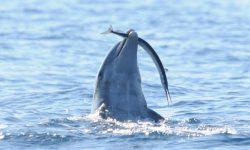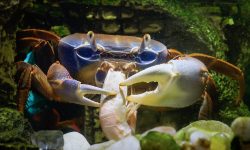Hummingbirds are some of the most mesmerizing and graceful birds on Earth. Known for their shimmering feathers and rapid wingbeats, these tiny birds are a symbol of energy, elegance, and endurance. Despite their delicate appearance, hummingbirds have one of the fastest metabolisms of any bird, which means they must eat almost constantly to survive.
To maintain this incredible energy, hummingbirds rely on a diet that’s both rich in sugar and high in nutrients. They visit hundreds of flowers every day, consuming food nearly every 10–15 minutes. In addition to nectar, they also eat insects and other small foods to get the proteins and minerals they need.
Whether you’re a birdwatcher, gardener, or nature enthusiast, understanding what hummingbirds eat helps you attract and support these brilliant pollinators in your backyard. Let’s explore the 20 foods hummingbirds love most — from flower nectar to tiny insects that fuel their lightning-fast flight.
Understanding the Hummingbird Diet
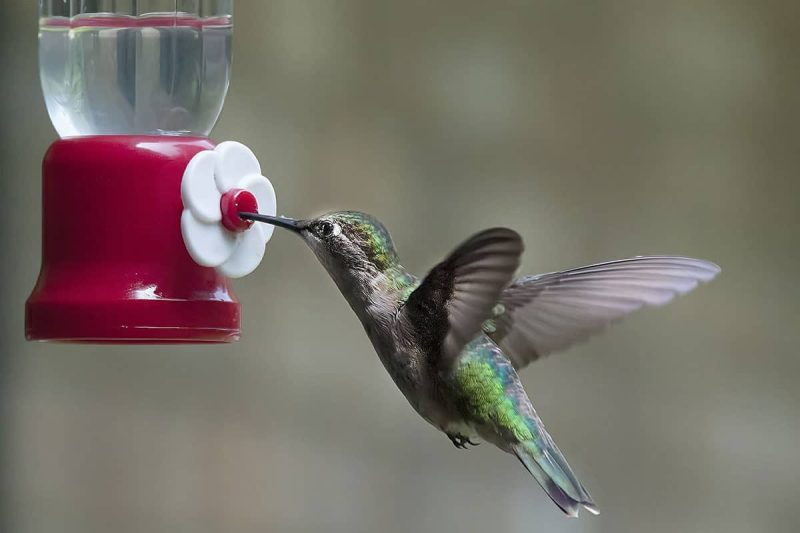
How Hummingbirds Eat
Hummingbirds are specialized nectar feeders, with long, slender beaks and tongues designed for sipping liquid food. Their tongues act like tiny pumps, lapping up nectar up to 15 times per second. They visit thousands of blossoms daily, often hovering in midair while feeding — a unique ability powered by rapid wingbeats reaching 50 to 80 per second.
Nutritional Needs
While nectar is their main energy source, it lacks essential proteins and minerals. To balance their diet, hummingbirds consume small insects and spiders. These provide amino acids necessary for muscle growth and feather maintenance. A typical hummingbird may eat half its body weight in food every day just to sustain its metabolism.
Seasonal Variations
In spring and summer, when flowers are abundant, nectar dominates their diet. As seasons change and blooms fade, they rely more on insects and tree sap. During migration, they increase their food intake drastically, building fat reserves to fuel their long journeys across continents. A diverse diet ensures survival through all conditions.
20 Foods Hummingbirds Love the Most
1. Flower Nectar
Nectar is the lifeblood of a hummingbird’s diet. It’s a natural source of sugar that provides immediate energy for flight and activity. Hummingbirds seek out brightly colored, tubular flowers — especially red, pink, and orange varieties.
Flowers like salvia, trumpet vine, and columbine produce abundant nectar that hummingbirds can easily access. They return to the same flowers repeatedly, remembering which plants replenish fastest.
This sugary liquid not only fuels their wings but also keeps them hydrated, as nectar is mostly water.
2. Sugar Water
Artificial feeders filled with sugar water are an excellent supplement when natural nectar sources are limited. The ideal mixture is four parts water to one part white sugar. This mimics natural nectar and gives hummingbirds a reliable energy boost.
Feeders should be cleaned and refilled every few days to prevent mold and fermentation. Avoid red dyes or artificial sweeteners, as they can harm the birds.
Sugar water ensures consistent feeding opportunities during migration or drought, helping hummingbirds maintain strength and stamina.
3. Small Insects
Insects make up a vital protein source for hummingbirds. They catch gnats, fruit flies, and mosquitoes mid-air using agile flight maneuvers. These insects provide amino acids essential for tissue repair and muscle health.
Hummingbirds also glean insects from leaves, bark, or spider webs, especially when feeding chicks that require rapid growth.
This animal-based protein supports strong feathers, resilient muscles, and a healthy immune system — crucial for such an energetic species.
4. Spiders
Hummingbirds actively seek spider webs not just for insects but also for the silk itself, which they use to build their nests. While visiting, they sometimes eat the spiders too.
Spiders are protein-rich and offer trace minerals that help maintain balance in their nutrient intake.
This unique feeding habit highlights the hummingbird’s opportunistic diet and its role in controlling small invertebrate populations.
5. Tree Sap
When flowers are scarce, hummingbirds turn to tree sap as a backup energy source. They often feed from holes drilled by woodpeckers or sapsuckers, sipping the sweet fluid that oozes from bark.
Tree sap provides natural sugars and minerals similar to nectar, sustaining them in early spring or late fall.
This behavior shows their adaptability — finding energy even when floral resources are low.
6. Pollen
Though hummingbirds don’t intentionally eat pollen, they ingest small amounts while feeding on flowers. Pollen adds trace proteins and nutrients to their diet.
As they move from bloom to bloom, they play a critical role in pollination, transferring pollen grains that allow plants to reproduce.
This symbiotic relationship benefits both bird and flower, sustaining ecosystems worldwide.
7. Fruit Juice
Hummingbirds occasionally sip juice from overripe or damaged fruits like oranges, bananas, and berries. The sugary liquid offers hydration and a fast energy source.
In tropical regions, where fruits are abundant year-round, this becomes an important dietary supplement.
If feeding them, always use fresh fruit — never fermented or moldy — to prevent digestive issues.
8. Gnats
Tiny flying insects such as gnats are one of the easiest prey for hummingbirds. They hover near swarms, darting in and out to grab them midair.
Gnats are packed with protein and water, ideal for balancing the high sugar content of nectar.
This quick hunting technique allows hummingbirds to maintain nutrition even while constantly in flight.
9. Mosquitoes
Hummingbirds naturally help control mosquito populations. They eat both adult mosquitoes and larvae found near water sources.
These insects offer hydration and minerals, as well as valuable protein.
By consuming mosquitoes, hummingbirds indirectly benefit other animals and humans by reducing pest numbers.
10. Aphids
Aphids are soft-bodied insects found on flower stems and leaves. Hummingbirds often consume them while feeding on nectar.
They provide essential amino acids and small amounts of fat, useful for high-energy demands.
This incidental predation helps control garden pests, making hummingbirds a gardener’s ally.
11. Flies
Flies and fruit flies are frequent prey for hummingbirds, especially around decaying fruit or compost piles.
These insects provide valuable protein and minerals that nectar alone can’t supply.
By feeding on flies, hummingbirds balance their diet and maintain muscle performance for sustained flight.
12. Ants
Hummingbirds sometimes consume ants, particularly when raiding tree sap wells or flower clusters.
Ants are full of protein and trace elements, though they’re not a major food source due to their bitter taste.
Still, they occasionally add variety to the diet, showing the hummingbird’s adaptability to diverse environments.
13. Beetles
Tiny beetles and larvae are opportunistically eaten by hummingbirds when found near flowers or on plants.
They add protein and minerals that strengthen feathers and bones.
Larvae, being soft-bodied, are especially useful for feeding young chicks in nesting season.
14. Plant Resins
Plant resins, often collected along with sap, contain trace minerals and natural antimicrobial properties.
Some hummingbirds are known to lick small amounts of resin or sticky secretions for supplemental nutrition.
This behavior also helps them combat intestinal bacteria and maintain a balanced digestive system.
15. Tree Nectar
Certain trees like eucalyptus and silk trees produce nectar-rich blossoms that attract hummingbirds.
These sources are especially important in forests and tropical habitats where flowering trees dominate.
Tree nectar helps sustain large populations and ensures year-round feeding options.
16. Flower Petals
On occasion, hummingbirds nibble on flower petals or consume trace nectar left within.
Petals provide fiber and small plant compounds that may aid digestion.
Though not a main dietary item, this behavior reflects their curiosity and close association with blooming plants.
17. Wasps and Small Bees
Hummingbirds sometimes eat small bees or wasps that linger near flowers. They catch them midair or pluck them from petals.
These insects are rich in protein, though consumed cautiously due to stingers.
Such prey offers energy-dense nutrients during breeding and migration periods.
18. Sap Insects (Scale and Mealybugs)
Hummingbirds occasionally eat sap-sucking insects found on trees and shrubs.
These pests provide concentrated nutrition, especially when nectar is unavailable.
By controlling such insects, hummingbirds indirectly protect plant health and maintain ecological balance.
19. Water
Water is vital to hummingbirds for hydration and digestion. They get most of their moisture from nectar, but they also sip droplets from leaves or birdbaths.
Providing shallow, clean water sources encourages regular visits from these birds.
Water plays a key role in temperature regulation and maintaining flight endurance.
20. Artificial Feeders with Nectar Substitutes
Commercial hummingbird feeders filled with homemade nectar mixes are essential for backyard feeding.
They provide consistent, safe nutrition during migration and dry seasons.
Placing feeders near native plants helps mimic natural feeding environments and attract more hummingbirds year-round.
FAQs About What Hummingbirds Eat
Do Hummingbirds Eat Only Nectar?
No, nectar is only one part of a hummingbird’s diet. While it provides the quick sugar energy they need for flight, hummingbirds also eat small insects and spiders. These foods supply essential proteins, fats, and minerals that nectar lacks. Without this protein-rich supplement, hummingbirds couldn’t grow, molt, or reproduce properly.
How Often Do Hummingbirds Eat?
Hummingbirds eat almost constantly — every 10 to 15 minutes throughout the day. Because of their rapid metabolism, they must consume more than half their body weight in food daily. They visit hundreds of flowers or feeders from dawn until dusk, resting briefly between meals to conserve energy.
Can I Feed Hummingbirds Sugar Water?
Yes, sugar water is a great substitute for natural nectar, especially when flowers are limited. Mix 1 part white sugar to 4 parts water, boil and cool before filling feeders. Never use honey, brown sugar, or artificial sweeteners, as these can harm hummingbirds. Also, clean feeders every 2–3 days to prevent mold growth.
Do Hummingbirds Eat at Night?
Most hummingbirds feed during daylight hours, but a few species may eat at dawn or dusk. At night, they enter a state called torpor — a form of deep sleep that slows metabolism and conserves energy. During this time, they rely on food stored as fat to survive until morning.
What Are the Best Flowers to Attract Hummingbirds?
Hummingbirds love brightly colored, tubular flowers such as salvia, trumpet vine, honeysuckle, bee balm, and columbine. Red and orange blossoms are particularly attractive because they signal a rich nectar source. Planting these varieties ensures a steady food supply throughout the blooming season.
Do Hummingbirds Eat Fruit?
Yes, they sometimes sip juices from overripe or damaged fruits like oranges, berries, and melons. These fruits provide quick energy and hydration, especially when nectar is scarce. However, they should never replace natural or feeder nectar in the bird’s diet.
How Much Do Hummingbirds Eat in a Day?
A single hummingbird may visit 1,000–2,000 flowers daily and consume up to half its body weight in nectar. Along with insects and sap, this fuels their fast-paced lifestyle, including migration flights that span hundreds of miles.
Can Hummingbirds Drink from Bird Baths?
Yes, but they prefer shallow, moving water. Traditional bird baths are often too deep, so a misting fountain or dripping water source works better. They use water not only for drinking but also for cleaning their feathers.
Is It Safe to Leave Feeders Out Year-Round?
In warmer climates, yes. Feeders can provide supplemental food throughout the year. In colder regions, remove them only after migration to prevent freezing. Keeping feeders available during early spring and late fall helps migrating hummingbirds refuel safely.
What Should I Avoid Feeding Hummingbirds?
Avoid anything artificial or processed — no honey, sweeteners, fruit juices with additives, or dyed nectar. These can cause fungal infections and disrupt their natural feeding behavior. Stick to plain sugar water and pesticide-free flowers for a safe, natural diet.
Final Thoughts
Hummingbirds may be small, but their diet is remarkably diverse and vital for their survival. From nectar and sugar water to insects and fruit juice, these foods fuel their dazzling aerial displays and long migrations. By providing safe, clean feeders and native flowers, you can support these incredible birds — ensuring they continue to brighten gardens with their color and energy for generations to come.



